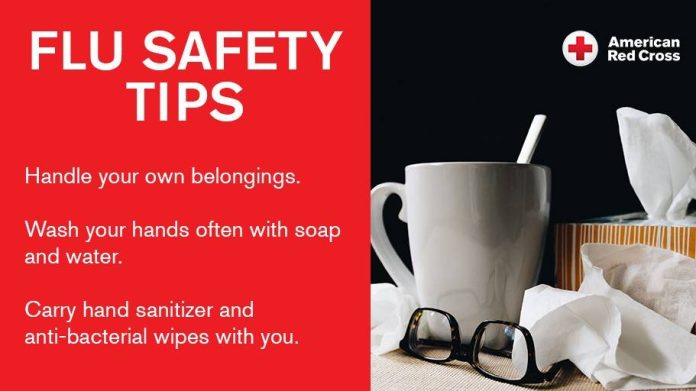Flu season is in full swing across much of the United States, with data from wastewater and hospital reports showing elevated levels of flu activity. According to the Centers for Disease Control and Prevention (CDC), more than 160,000 hospitalizations and over 6,600 deaths have already been attributed to flu complications this season.
And the worst may be yet to come—February is typically the peak month for flu cases in the U.S., according to the CDC.
Complicating matters, other respiratory illnesses like the common cold, COVID-19, and RSV (respiratory syncytial virus) are also circulating widely this winter. Here’s what you need to know to stay informed and protected.
Flu Symptoms
The flu often causes:
• Fever, chills, or feeling feverish
• Cough
• Sore throat
• Runny or stuffy nose
• Muscle or body aches
• Fatigue or tiredness
• Headache
• Vomiting or diarrhea (more common in children)
Because these symptoms overlap with those of the common cold, RSV, and COVID-19, it can be hard to determine what’s causing your illness without a medical test.
Flu or Something Else? Key Differences
While symptoms can be similar, there are distinctions:
• COVID-19 symptoms often appear later than those of the flu or cold and are more likely to involve a dry cough, muscle aches, and fatigue.
• Colds typically don’t cause fever or headaches, which are common with the flu and COVID-19. Muscle aches and tiredness are also rare with colds.
• RSV usually presents with mild cold-like symptoms in healthy individuals but can lead to severe illness in infants, young children, and older adults.
How Flu Spreads
The flu primarily spreads through droplets released when an infected person coughs, sneezes, or talks. You can also catch the flu by touching surfaces contaminated with the virus and then touching your nose, mouth, or eyes.
Preventing the Flu
To reduce your risk of flu:
• Get vaccinated: The flu vaccine is recommended for everyone 6 months and older. While it may not completely prevent illness, it significantly reduces the risk of severe complications.
• Practice good hygiene: Wash your hands frequently with soap and water, cover your coughs and sneezes, and avoid touching your face.
• Stay home if sick: The CDC advises staying home until your symptoms improve and you’ve been fever-free for at least 24 hours without medication.
• Wear a mask: If you need to interact with others while sick, wearing a mask (like an N95 or KN95) can help prevent the spread of the virus.
Treatment Options
If you develop flu symptoms, antiviral medications prescribed by a doctor can help. These treatments work best when started within a few days of symptoms appearing.
By staying vigilant and taking preventative measures, you can protect yourself and those around you from the flu and other respiratory illnesses this season.








